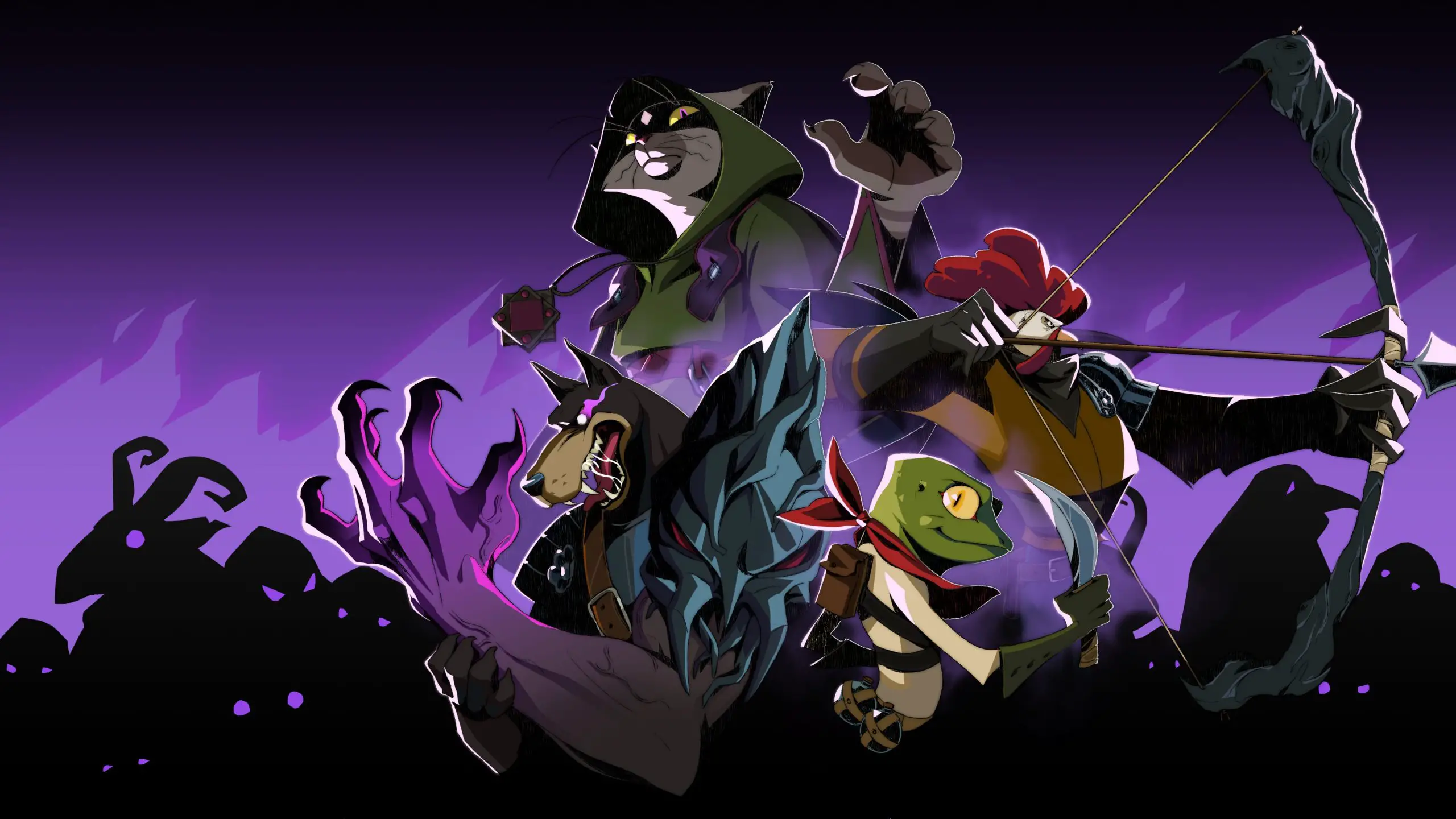I’ve just wrapped up the demo for Shuffle Tactics, the tactical RPG developed by Club Sandwich and published by The Arcade Crew. Since the new demo just dropped and I had the chance to try it out, plus the release date has finally been announced, I figured it was the perfect time to give you an overview.
What exactly is Shuffle Tactics?
Shuffle Tactics is a deck-building tactical RPG featuring anthropomorphic characters and a Roguelite structure with classic branching progression. The real focus is on tactical combat involving multiple controllable units that join your chosen hero at the start—these units are called sidekicks.
In Shuffle Tactics, our heroes are tasked with fighting the despotic King Ogma. However, as with most roguelites, the story takes a back seat, mainly serving to set the atmosphere while players focus on defeating enemies in battles. Now, let’s dive into some gameplay details and my experience with the new demo.
After a brief video introduction to the story and the threat of the Glimmer, you get to choose your starting character. In my case, I played as Doberknight, an offensive-focused character with a deck packed with attack cards and abilities that let him swiftly move across the battlefield to engage enemies in melee.
On the other hand, the new demo also introduces the second playable character, Fletch. Unlike Dobelknight, Fletch is designed to raise shields and protect his sidekicks, leaving most of the damage-dealing to them. For each character, you can track the progression of unlocked cards, relics, and, most importantly, the main starting skill. During my demo playthrough, I only had one skill unlocked—I’ll tell you more about that shortly.
Combat System, Sidekicks, and Charms
Once you’ve chosen your character, you’re presented with the classic branching map—a familiar sight in most roguelites. Each node on the map represents different encounters: standard battles, elite enemies, shops where you can acquire cards and items, and ultimately, the far-right node where the boss battle awaits. Each node provides a preview of the potential rewards you’ll earn if you come out victorious.
In Shuffle Tactics, battles take place on fairly large, square-grid maps where turns are taken by teams rather than individual units. This means you move all your units first, and then it’s the enemies’ turn. Each unit has movement points to traverse the map and action points to play cards. Naturally, cards come with varying costs, and using them strategically can even refund points if played correctly, for example, the Shoulder Bash skills, which refund a skill point if the enemy will hit an obstacle or another unit.
As I mentioned earlier, Doberknight is an offensive character, primarily wielding melee attack cards. However, he also has several mobility abilities, like leaps and teleportation, allowing him to cover ground quickly. His starting skill is especially cool—it lets him throw his sword, which then remains on the battlefield. On the next turn, you can recall it—much like Thor’s hammer—dealing return damage to any enemies it passes through.
The combat system is packed with elements that add depth. You’ll find typical status effects, like setting a tile on fire or freezing it, which can enhance certain cards. There’s also the option to push enemies into obstacles, and combining attacks with your sidekicks significantly changes how you approach each run.
The challenge level—at least from what I experienced in the demo—feels well-balanced. It pushes you to think strategically and can easily lead to your downfall if you recklessly charge into a group of enemies, given how much damage they can deal. You’ll need the right mix of offensive moves and, every now and then, a focus on defense by playing cards that raise your shield and absorb damage.
At the end of each battle, you’ll earn new cards, relics, and charms. Relics are special items—reminiscent of those in Slay the Spire—that grant various tactical advantages. The real standout, however, is the charms. These items can be applied to cards to enhance their attributes or add a special status effect. Each card has a limited number of charm slots, which you can expand by visiting shops.
My Two Cents
My first impression of Shuffle Tactics is overwhelmingly positive. The battles are smooth and challenging, backed by impressive pixel-art visuals and immersive audio design. Each character potentially brings a unique approach to combat, and the variety of side characters adds even more tactical depth.
It’s true that the roguelite formula these days often feels familiar, and there’s room for more originality in progression systems. That said, for players who enjoy this structure and are simply looking for their next roguelite fix—fueled by fresh runs—Shuffle Tactics stands out as a solid pick. And the pixel art? It’s especially striking, beautifully illustrating both the battlefield and the UI. The soundtrack and sound effects further enhance the immersion.
When it launches on PC on the 24th of June, Shuffle Tactics will feature three main characters, ten sidekicks, six regions to explore, and a wealth of cards, relics, and charms—promising plenty of depth and replayability. In the meantime, check out the demo and let me know your thoughts once you’ve tried it!










